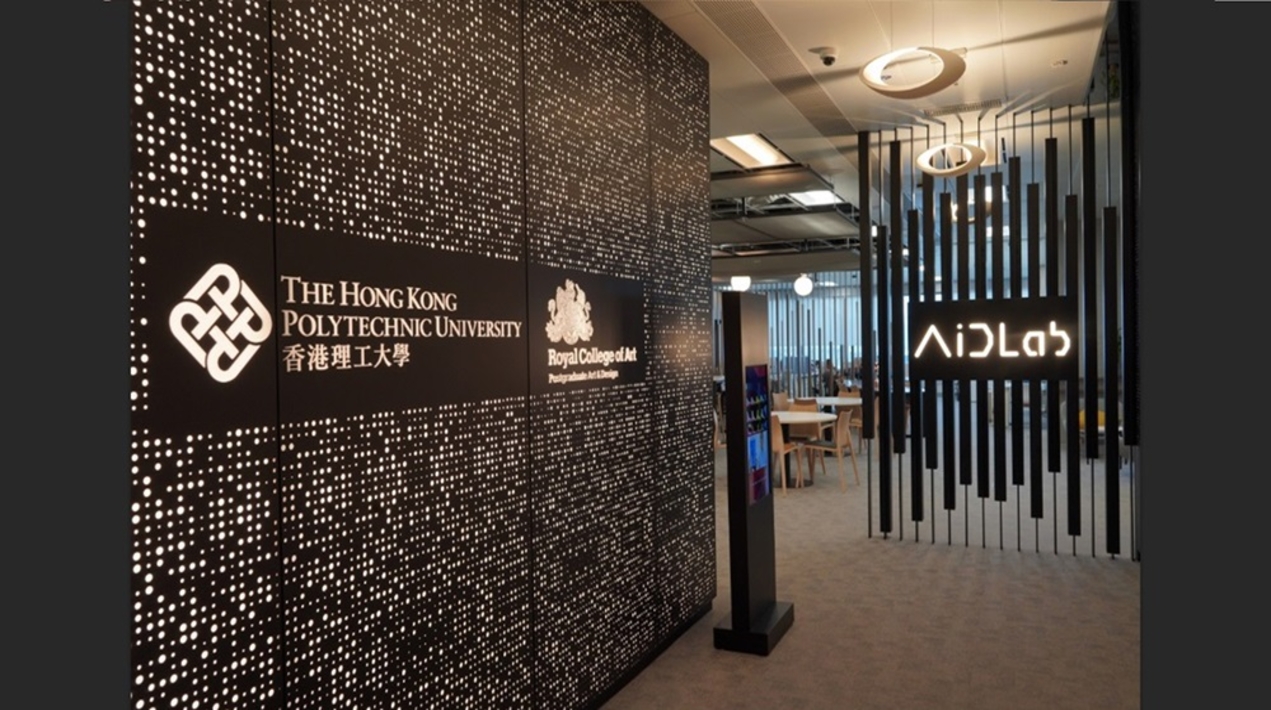
In support of the Hong Kong government’s new initiative, InnoHK Clusters, which aims to develop Hong Kong as a hub for global research collaboration, The Hong Kong Polytechnic University (PolyU) has joined forces with world-leading institutions to develop research centres under two newly established research clusters – AIR@InnoHK (focusing on artificial intelligence and robotics technologies) and Health@InnoHK (focusing on healthcare-related technologies), in a bid to bring together leading researchers from around the world to conduct impactful collaborative research in Hong Kong.
PolyU is pleased to establish three world-class research centres at the Hong Kong Science Park under the government-funded InnoHK initiative. These three centres, which have commenced operation, are i) the Laboratory for Artificial Intelligence in Design (AiDLab), ii) the Centre for Advances in Reliability and Safety (CAiRS), and iii) the Centre for Eye and Vision Research (CEVR).
PolyU has also become the first local collaborating institution of the “Centre for Artificial Intelligence and Robotics, Hong Kong Institute of Science & Innovation, Chinese Academy of Sciences”. Established by the Institute of Automation of the Chinese Academy of Sciences (CAS), the Centre has been admitted to AIR@InnoHK under InnoHK Clusters. With a longstanding and close collaborative relationship, PolyU and CAS, based on their existing cooperation, will further conduct in-depth research collaboration and academic exchange activities in frontier research in data science and artificial intelligence, to jointly promote the development of the AI industry.
The President and Provost of PolyU stated that by partnering with world-acclaimed institutions to establish research centres in InnoHK’s two research clusters, PolyU aims to fully leverage each institution’s academic strengths to bring about significant research breakthroughs, and thereby create impactful technology that boosts the economy and brings benefits to society.
The Deputy Vice-Chancellor and Provost of the Royal College of Art noted that the strategic partnership integrates AI into the design of products and services, delivering vital research to understand the future of society and the economy, interrogating future requirements and humanising the fourth industrial revolution.
The Director of the Center for Advanced Life Cycle Engineering (CALCE) of the University of Maryland, College Park, USA said that the collaboration between PolyU and CALCE, that aims to conduct research and development to enable advanced design and manufacturing, and to test the next generation of reliable and safe electronics and components for transportation, consumer products, telecommunication systems, public utilities and other applications in Hong Kong.
Together, it is hoped that a new paradigm for reliability science can be developed and a customised product health management for different industry sectors, using real-time, in-situ, artificial intelligence-based reliability and safety analytics can be promoted.
Going forward, PolyU will continue its efforts in addressing the ever-changing needs of society by promoting high-impact research and fostering collaborations with world-leading institutes, industry partners as well as the government, in order to contribute further to the future research clusters of InnoHK.
Laboratory for Artificial Intelligence in Design (AiDLab)
In collaboration with the Royal College of Art, UK, PolyU established the AiDLab under the AIR@InnoHK cluster to integrate innovative AI technologies into the design to address society’s needs for creativity, efficiency and customisation of products and services. AiDLab is the world’s first research laboratory specialising in interdisciplinary AI and design innovations. Its cutting-edge research will create impacts on society, industry and policy that enhance the quality of life. Three research programmes at AiDLab include Ergonomic and Inclusive Design, Innovation in Product and Service Design, and Intelligent Fashion Design and Quality Control.
Centre for Advances in Reliability and Safety (CAiRS)
CAiRS has been initiated by PolyU under the AIR@InnoHK cluster and the key research collaborator is the University of Maryland, College Park, USA. CAiRS’ mission is to develop new approaches using AI methodologies for customised management and to ensure the reliability and safety of products and systems used in robotics, medical devices, vehicles, telecommunication, consumer products, public utilities, transportation, microelectronics, power devices, sensors and IoT products as well as a broad range of Advanced Manufacturing applications. These research applications and deliverables will contribute significantly to Smart City development.
Five research programmes at CAiRS, namely Anomaly Detection and Syndromic Surveillance, Innovative Diagnostics for Product Health Management, Prognostics for Remaining Useful Life Assessment, Safety Assurance to improve Functional Safety, and Data Analytics Platform for Reliability have commenced.
Centre for Eye and Vision Research (CEVR)
Under the Health@InnoHK cluster, CEVR has been set up as a joint partnership between PolyU and the University of Waterloo, Canada. CEVR promotes eye health with clinical, basic and applied research, and develops ground-breaking technologies to prevent vision loss and preserve sight among the ageing population. CEVR runs five research programmes, namely Myopia and Eye Growth, Ocular Drug Discovery and Delivery, Vision Enhancement, Tear Film and Ocular Surface, and Advanced Optometric Technology.
















